Lina Ghotmeh designs Serpentine Pavilion as a space for "people to get together"
Architect Lina Ghotmeh discusses her design for this year's Serpentine Pavilion in London, in this exclusive video produced by Dezeen for the gallery.
Set to take the form of a timber shelter housing a concentric table for visitors to congregate around, Ghotmeh's pavilion in London's Kensington Gardens will open to the public next Friday – 9 June 2023.
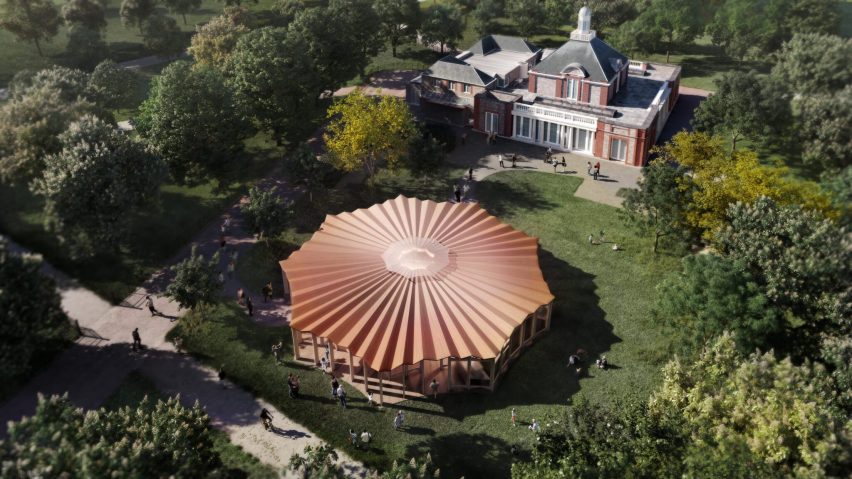
Ghotmeh is the 22nd architect to be commissioned for the Serpentine Pavilion. She designed the structure, named Named À table, as a space for exchange and celebration.
"The pavilion emerges around this concentric table that allows people to get together," said Ghotmeh.
"[It's] named À table, which is the French call to get together around the same table," she explained. "When you're young your parents would tell you to come down and get together to eat, discuss."

The architect described her design philosophy when creating the structure as "archaeology of the future"
"Archaeology of the future is a concept that I came up with early on in my studies of architecture," she told Dezeen. "It's a way of looking at architecture as a constant research of traces, of elements coming from various disciplines, that are synthesised into space," she continued.
"Growing up in Beirut, a city that has been constantly rebuilt after the war, growing up in the city [I was] imagining spaces and completing spaces, because sometimes you would see a ruin and imagine how would this be completed, to be finished as a building?"
"The structure is like a leaf. If you look in a microscope at a leaf, if you will see this main vein," she added.
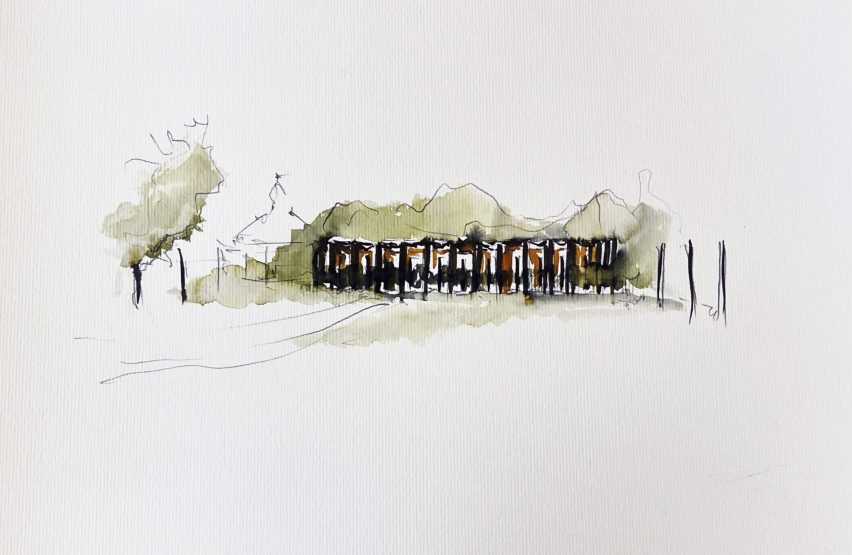
The pavilion will be made predominantly from timber, with an emphasis on bio-sourced and low carbon materials.
"The pavilion is really just composed of this cantilevering beam built in wood." Ghotmeh explained. "As we speak today that pavilion is being built - you can see the skeleton being built, almost like a spider actually, like an organic being sitting and emerging from the site."
"I'm really looking forward to see it finished, and also to see people inhabiting it and creating a community," she added.
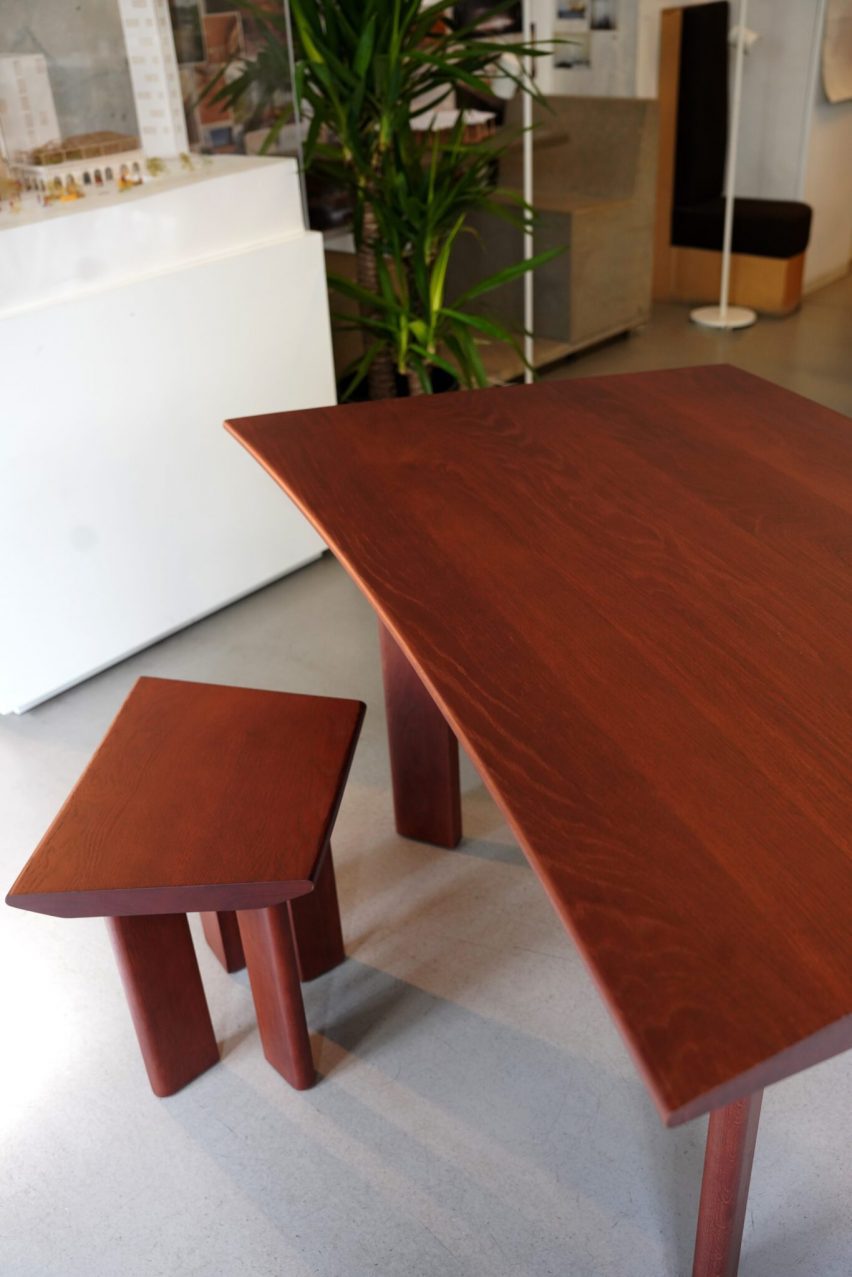
Ghotmeh is the latest architect to be commissioned to design the pavilion. Her first major commission was designing the Estonian National Museum, near the city of Tartu.
Working with Paris-based architecture office Dorell Ghotmeh Tane (DGT), Ghotmeh won the competition to design the museum in 2005 alongside DGT co-founders Dan Dorell and Tsuyoshi Tane. The museum opened in late 2016.
The 34,000-square-metre museum has a wedged shape, with a huge slanted roof that evokes the old airbase that used to occupy the site.
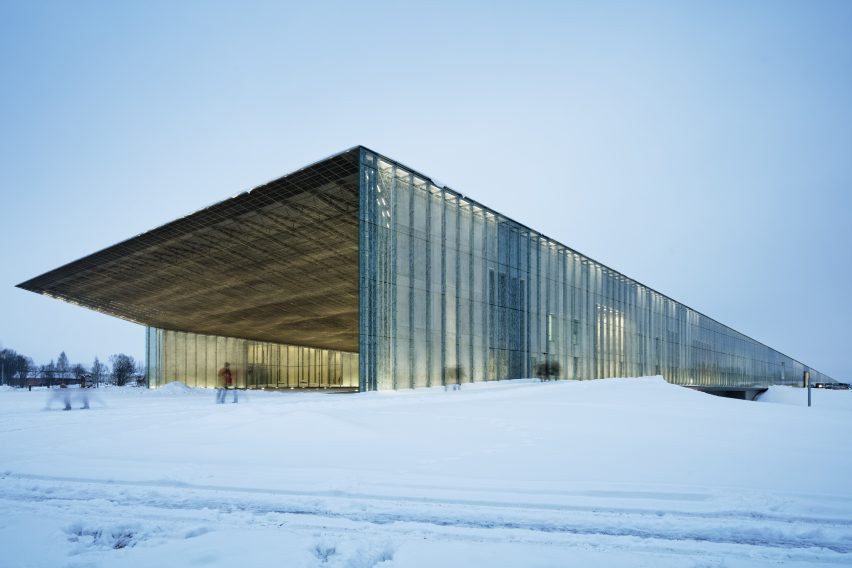
The ramp-like form was intended to evoke the country's emerging history, as it "takes of" into a new future.
Floor-to-ceiling glass panels make up the walls of the structure, allowing plenty of natural light into the exhibition spaces, alongside a sheltered courtyard.
Ghotmeh's more recent projects include her Stone Garden housing project in Beirut and the Maroquinerie de Louviers workshop for fashion brand Hermès.
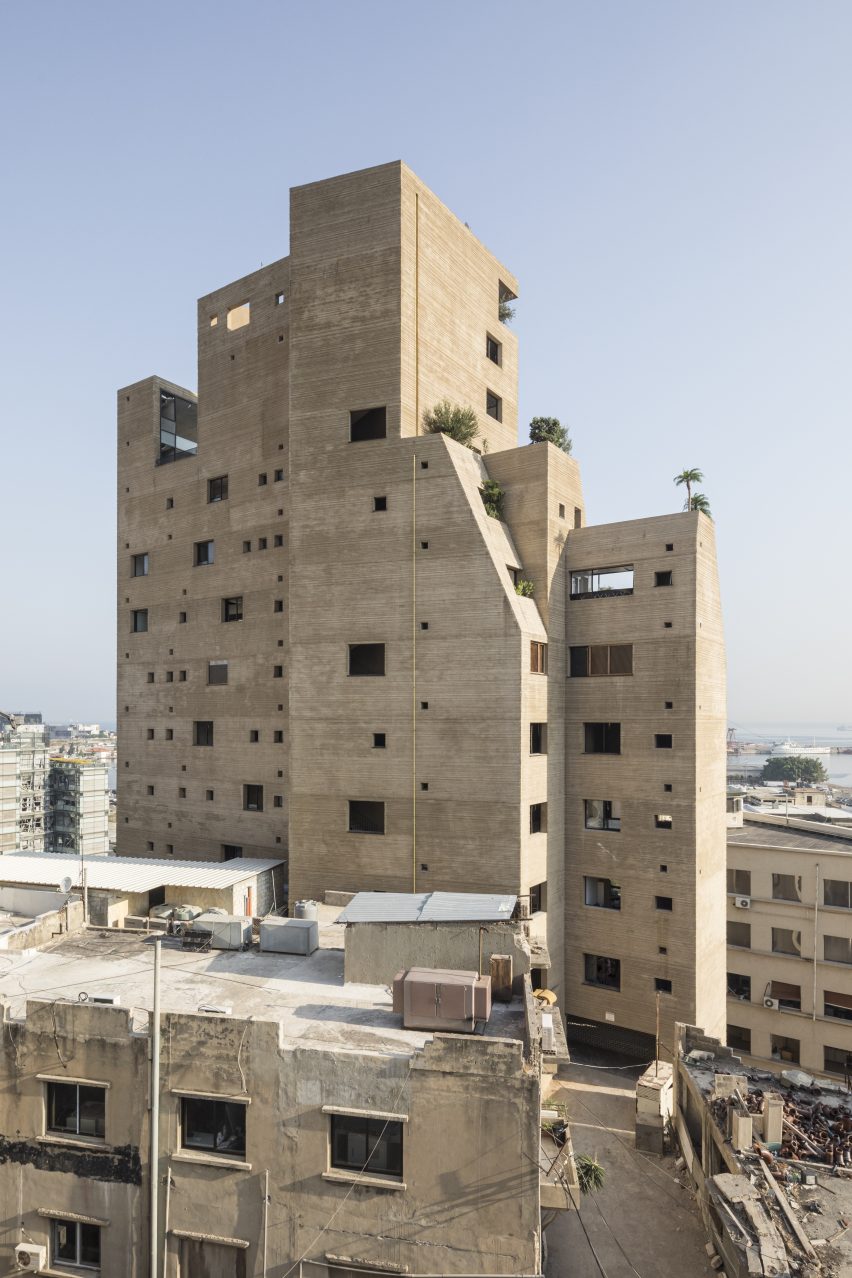
Stone Garden is an apartment block located in Beiruit, Lebanon, completed shortly after the Beirut explosion in 2020. The project was named architecture project of the year at Dezeen Awards 2021.
The building was constructed from a mix of cement and local earth, and the facade was hand-combed by local artisans to create a ridged effect. Apartments are accompanied by deep-set balconies which act as gardens for residents. The block also houses an art platform.
Ghotmeh wanted the building to reflect the character of Beirut, moving away from a traditional Western canon of architecture. The apartment block is notable for it's use of Lebanese and Middle Eastern aesthetics, bringing to mind natural structures such as the Pigeons' Rock on the coast of Beiruit, as well as ancient structures such as the city of Shibam in Yemen.
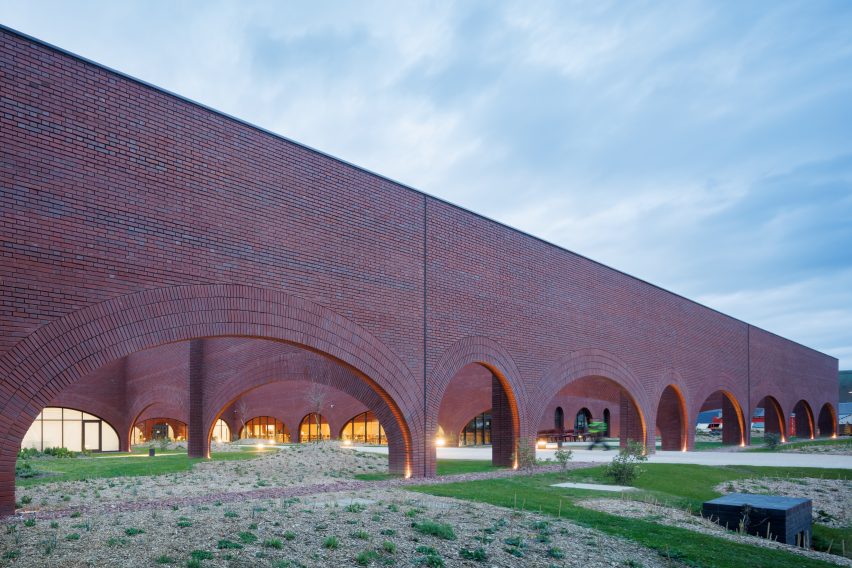
Ghotmeh's most recent project is a brick workshop situated in Louviers, France, designed for the luxury fashion brand Hermès.
The 6,200-square-metre workshop is designed to house 260 leatherwork artisans. The building is characterised by large swooping brick arches, which are intended to invoke the movements of a leaping horse.
The building is notable for being the first industrial building to achieve France's highest environmental labelling, the E4C2 label.
The workshop is heated using geothermal energy from 13 probes that reach a depth of 150 metres, in addition to 2,300 square metres of solar panels. The interior of the structure is designed in order to utilise as much natural light and ventilation as possible, limiting energy needs.
Ghotmeh's Serpentine Pavilion follows last year's Black Chapel, which was designed by artist and designer Theaster Gates. Previous Serpentine Pavilions have been built by architects such as Frida Escobedo, Bjarke Ingels and Sou Fujimoto.
Partnership content
This video was produced by Dezeen for the Serpentine Galleries as part of a partnership. Find out more about Dezeen partnership content here.